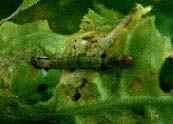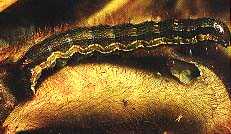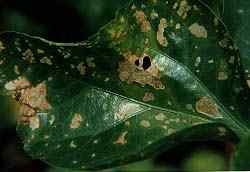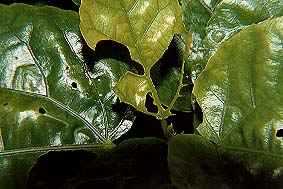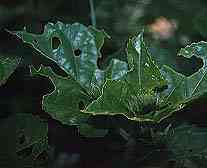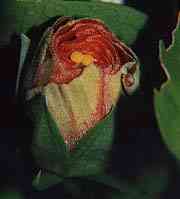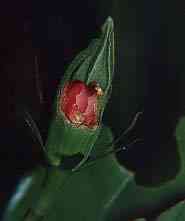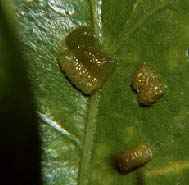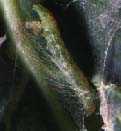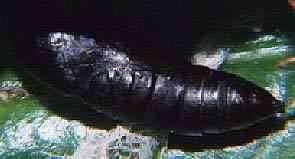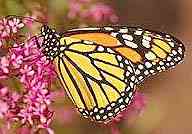

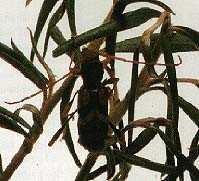
Of the
Order Coleoptera: Family Cerambycidae
It not the beetle in the adult stage
that does the damage but the larval stage where is bores into the centre of the
stem consuming the plant tissue inside. These beetles vary in size from 5 to 60
mm.
Most are brown or grey & all have the same basic shape.
The
sides of these beetles are fairly straight & they appear to have square
shoulders.
And the atennae are very long.
Eggs are layed in the cracks
in the bark.
The larvae are cream coloured & have no obvious legs &
are broader at the head than the rear.
.
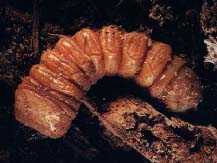
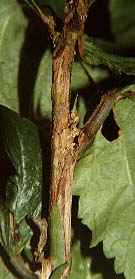
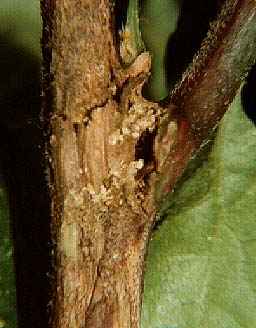
Lepidoptera undergo complete metamorphosis . Four stages make up the full
life cycle: egg, larva (caterpillar), pupa (cocoon or chrysalis), and
adult. After mating, the adult females of most Lepidoptera usually lay eggs on a
plant that serves as the food source for the larvae when they hatch. In a few
species, however, the larvae are predators. Some butterfly caterpillars, for
example, eat aphids; some form complex associations with ants, live in their
nests, and eat ant larvae. Some larvae eat stored cereals or even woolen
clothes. Larvae have rather elastic cylindrical bodies, simple eyes, chewing
mouthparts, three pairs of true legs on the thorax, and usually five pairs of
prolegs on the abdomen. They eat continuously, periodically shedding their skin
as they grow to hundreds of times their original size, and finally reach the
stage where they spin cocoons and become pupae. During pupation the structures
of the larvae totally transform; internal systems are reorganized and adult
external structures develop.
Adult butterflies and moths feed on a wide
variety of substances: nectar, pollen, rotting fruit, carrion, dung, urine, and
other plant and animal exudates. Most Lepidoptera actively seek nectar from
flowering plants, effectively carrying pollen from plant to plant and thus
aiding in plant reproduction. In many species, such as sulfur butterflies (
Colias ), egg production is impossible without nectar meals. In others, such as
the checkerspot butterflies ( Euphydryas ), unfed females lay about half as many
eggs as those provided nectar. A few adult moths do not have functional
mouthparts and lay all their eggs without obtaining nourishment.
Habitats
and Range. ![]()
Larvae
of butterflies and moths are usually found feeding on a single species or a few
related species of plants. As a result of this close relationship, many
Lepidoptera species are isolated in colonies in particular habitats. Other
species may be more wide-ranging, especially those that lay eggs on widely
distributed or weedy plants. A few butterflies, including the well-known Monarch
Butterfly may migrate thousands of kilometers to spend the winter in large
aggregations at select sites. In some Lepidoptera, competition between larvae
for host plants produces population cycles; large populations may build and then
"crash," with most individuals dying.

No absolutely consistent characteristics exist for separating butterflies and
moths. Butterflies generally have scaleless, threadlike antennae with a club on
the end. Wings are often brightly colored, and the wing color and pattern play a
key role in mate recognition and courtship. Nearly all butterflies fly during
daylight, but some tropical species fly at dawn or dusk, and a few are
nocturnal. About 18,000 species are known worldwide. The largest butterflies
(bird wings of Melanesia) have wingspans of up to 25 cm (10 in); the smallest
(pygmy blues) may barely exceed 1 cm (0.4 in).
Moths have a wide variety of
antennae forms, often feathery in appearance. Although many moths, especially
day-flying ones, are brightly colored, most are dull shades of brown. Males are
often attracted to females by a powerful chemical signal called Pheromones
that the females release from special glands. Most moths fly at night, although
many also fly during the day, especially in colder climates where evening
temperatures often drop to freezing. (Their apparent attraction to a light
source at night is a reflex; wing motion on the side struck by the light is
reduced, causing them to turn in that direction.) More than 130,000 moth species
have been named, and many more probably exist. The largest moths ( Attacus of
Asia) may exceed 30 cm (12 in) in wingspan; the wings of the smallest
(Microlepidoptera) may span only a number of millimeters.
Butterfly 
Size: X
.50
The colors and patterns of the wings of butterflies and moths
help to protect the organisms against predators. Some species possess eyespots
or other markings that draw the attention of enemies away from vital body parts
to the wings. In many species, cryptic coloration-wings looking like the natural
background of soil, bark, and leaves-provides camouflage, protecting Lepidoptera
from visually hunting predators.
The most intricate evolution is exhibited
by butterflies with particularly bright or warning coloration. Some of these
species deposit in their own tissues toxic chemicals from larval host plants
that make them distasteful or poisonous to vertebrates. Butterflies of this sort
are often marked with yellow, orange, or red on a dark background to warn
predators of their unpalatability. In many locations, especially in tropical
areas, edible butterflies and moths have evolved wing patterns mimicking
inedible species and thus gaining protection themselves. This has been called
Batesian mimicry, after its discoverer, the English naturalist and explorer
Henry Bates (1825-92). Another type of association, Muellerian mimicry, occurs
where several distasteful species fly together, sharing a similar warning
coloration and presumably reducing predation on each individual species by
giving predators fewer patterns to remember.
...
Moth species are among the most destructive pests of crops and stored
products; very few butterfly species, however, attack economically important
plants. Long studied by amateurs, who have produced a large body of biological
and distributional information, butterflies have become a key test group for
ecological and evolutionary research. They are particularly amenable to
laboratory analysis of a genetic nature, are easily monitored in the field, and
are thought to be representative of most herbivorous insects, humanity's most
important competitors for food. They also serve as key indicator species of
environmental disruption.





